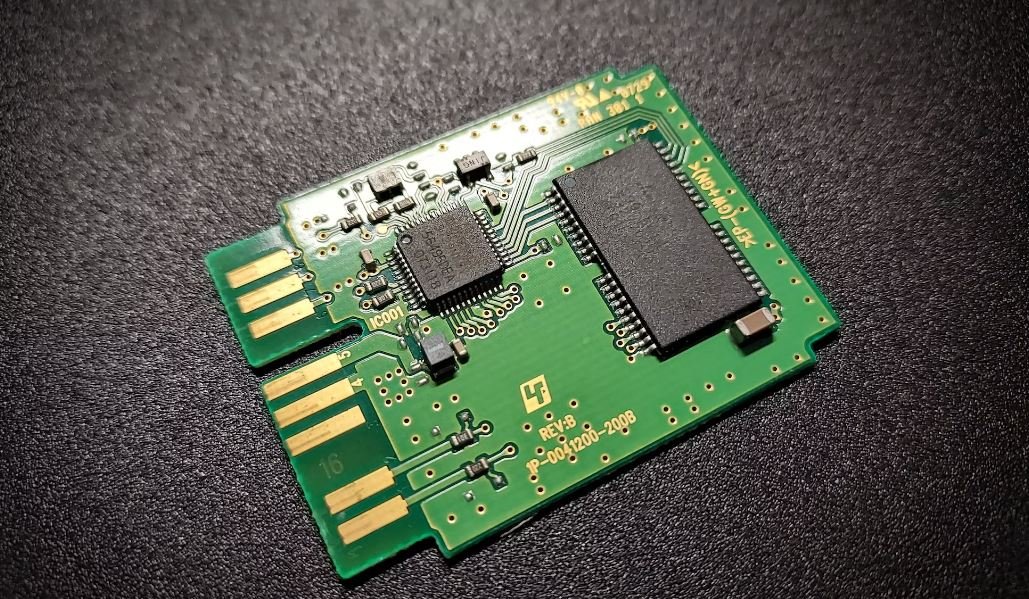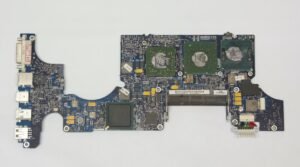What Is a Neural Net?
A **neural net** is a type of machine learning model that is inspired by the structure and functionality of the human brain. It consists of connected nodes, or “neurons,” which process and transmit information. Neural nets are widely used in various fields, including image and speech recognition, natural language processing, and autonomous vehicles.
Key Takeaways
- Neural nets are algorithms inspired by the structure and functioning of the human brain.
- They consist of interconnected nodes called neurons that process and transmit information.
- Neural nets are utilized in various applications including image recognition, natural language processing, and autonomous vehicles.
Overview of Neural Nets
A neural net is comprised of **input**, **hidden**, and **output** layers. The input layer receives initial data, which is then processed by the hidden layers. Finally, the output layer provides the resulting prediction or classification. The nodes within the layers are connected by weighted connections, simulating the synaptic connections between neurons in the brain.
*Neural nets have revolutionized the field of artificial intelligence due to their ability to learn from large datasets and identify complex patterns.* These models excel in areas where traditional rule-based programming falls short, as they can automatically extract features without explicit guidance.
Types of Neural Nets
Neural nets can have various architectures, each suitable for specific tasks:
- Feedforward Neural Networks: Information flows only in one direction, from input to output. Used for tasks like classification and regression.
- Recurrent Neural Networks (RNNs): Connections between nodes form cycles, allowing for feedback loops. Ideal for tasks involving sequential data, such as language translation and speech recognition.
- Convolutional Neural Networks (CNNs): Specialized architecture for processing grid-like data, such as images. CNNs are widely used in computer vision applications.
- Long Short-Term Memory (LSTM) Networks: A type of RNN capable of retaining information over long sequences, making them suitable for tasks that involve predicting future events based on past data.
Applications of Neural Nets
Neural nets have numerous real-world applications across different industries. Some notable examples include:
- Image Recognition: Many computer vision tasks, such as object detection and facial recognition, heavily rely on neural nets.
- Natural Language Processing (NLP): Neural nets are used in applications such as sentiment analysis, machine translation, and chatbots.
- Autonomous Vehicles: Neural nets play a critical role in enabling self-driving cars to perceive and interpret their surroundings.
- Medical Diagnosis: They assist in medical image analysis and automated diagnosis systems, aiding in the detection of diseases and abnormalities.
Evolution of Neural Nets
Over time, neural nets have evolved, leading to advancements in machine learning:
| Decade | Advancement |
|---|---|
| 1940s | First conceptual models of neural nets emerge. |
| 1950s | Development of the perceptron, a fundamental building block of neural nets. |
| 1980s | Backpropagation algorithm improves the training process. |
Furthermore, the availability of high-performance computing and large datasets drives current breakthroughs in neural net research.
Advantages and Limitations
Neural nets offer several advantages, but they also have certain limitations:
- Advantages:
- Highly capable of handling and learning from large and complex datasets.
- Effective in extracting patterns and features without explicit guidance.
- Can process various types of data, such as images, text, and time-series.
- Limitations:
- Require substantial computational resources and time for training.
- Black-box nature makes it challenging to interpret and understand decision-making processes.
- Overfitting on training data can occur, resulting in poor generalization to new data.
The Future of Neural Nets
*Continual advancements* in neural net research and technology suggest a promising future for these models. Ongoing research focuses on improving interpretability, reducing computational requirements, and finding solutions to current limitations. With a wide range of applications and impressive performance, neural nets are set to contribute significantly to the advancement of artificial intelligence in the years to come.

Common Misconceptions
Misconception 1: Neural Nets are Artificial Brains
One common misconception about neural nets is that they are equivalent to artificial brains. While neural nets are inspired by the structure and function of the human brain, they are not capable of the same level of intelligence or cognition. Neural nets are mathematical models that use algorithms to process data and make predictions or decisions, but they lack the complexity and consciousness of a human brain.
- Neural nets are mathematical models, not biological organisms.
- They do not possess consciousness or awareness.
- Their function is limited to processing data according to predefined algorithms.
Misconception 2: Neural Nets are Always Deep
Another misconception is that all neural networks are deep neural networks. While deep neural networks are a popular and effective type of neural net, not all neural nets are deep. Neural nets can have different structures and sizes, and not all of them have multiple hidden layers. Some neural nets are shallow and have only one or two hidden layers, while others may have no hidden layers at all (such as the perceptron model).
- Not all neural networks have multiple hidden layers.
- Some neural nets are shallow and have only one or two hidden layers.
- There are neural nets without any hidden layers, such as the perceptron model.
Misconception 3: Neural Nets Always Require Labeled Data
Many people mistakenly believe that neural nets can only be trained using labeled data. While labeled data is commonly used for supervised learning, where the network learns from examples with known outputs, neural nets can also be trained using unsupervised learning methods. Unsupervised learning allows the network to discover patterns and relationships in unlabeled data, making it useful for tasks such as clustering, dimensionality reduction, and generative modeling.
- Neural nets can be trained using labeled and unlabeled data.
- Unsupervised learning allows networks to learn from unlabeled data.
- Unsupervised learning is useful for tasks like clustering and generative modeling.
Misconception 4: Neural Nets are Always Black Boxes
There is a common misconception that neural nets are always black boxes, meaning that their internal workings are not interpretable or understandable. While deep neural networks with many layers can be challenging to interpret, there are techniques and tools available to analyze and visualize their inner workings. Researchers have developed methods such as saliency maps, activation maximization, and network dissection to gain insights into the feature representations and decision processes of neural nets.
- There are techniques available to analyze and interpret neural networks.
- Saliency maps, activation maximization, and network dissection are examples of interpretability methods.
- Deep neural networks can be challenging to interpret, but not impossible.
Misconception 5: Neural Nets Can Solve Any Problem
Some people have the misconception that neural nets are a universal solution to any problem. While neural nets are powerful tools for many tasks, they are not a one-size-fits-all solution. The suitability of neural networks depends on various factors, including the nature of the problem, the availability of data, and computational resources. Different problems may require different types of neural networks or even alternative machine learning algorithms.
- Neural nets are not a universal solution for all problems.
- The suitability of neural networks depends on the problem and available resources.
- Alternative machine learning algorithms may be more suitable for certain tasks.

Introduction
In recent years, neural networks have gained immense popularity due to their ability to mimic the human brain and solve complex problems. They are revolutionizing various fields like computer vision, natural language processing, and data analysis. This article explores the fascinating world of neural networks and highlights some intriguing facts about them.
Table: The Brain vs. a Neural Network
The table below compares the human brain to a neural network, emphasizing their similarities and differences in certain aspects:
| Aspect | Human Brain | Neural Network |
|---|---|---|
| Number of Neurons | 86 billion | Varies (can be millions to billions) |
| Processing Speed | Slow (milliseconds) | Fast (nanoseconds) |
| Learning Capability | Lifelong learning | Through training |
| Architecture | Highly interconnected | Layered structure |
Table: Neural Network Applications
The table below showcases some incredible applications of neural networks in various domains:
| Domain | Application |
|---|---|
| Medicine | Diagnosing diseases from medical images |
| Finance | Predicting stock market trends |
| Art | Generating creative artwork |
| Transportation | Autonomous vehicle navigation |
Table: Types of Neural Networks
The table below categorizes different types of neural networks along with their primary functionalities:
| Neural Network Type | Functionality |
|---|---|
| Feedforward Neural Network | Pattern recognition |
| Recurrent Neural Network | Sequences, time series analysis |
| Convolutional Neural Network | Image processing, computer vision |
| Generative Adversarial Network | Generating synthetic data |
Table: Neural Network Training
The table below showcases different techniques used in training neural networks:
| Training Technique | Description |
|---|---|
| Backpropagation | Updating weights based on error |
| Gradient Descent | Finding optimal weight values |
| Dropout | Preventing overfitting |
| Batch Normalization | Improving network stability |
Table: Famous Neural Networks
Discover some notable neural networks that have made significant impacts:
| Neural Network | Famous Application |
|---|---|
| AlexNet | ImageNet competition winner, 2012 |
| Google’s DeepMind | AlphaGo – defeating world champions in Go |
| GPT-3 | Advanced natural language processing |
| ResNet | Highly accurate image classification |
Table: Neural Network Limitations
Explore some limitations and challenges faced by neural networks:
| Limitation | Description |
|---|---|
| Data Dependency | Requires large labeled datasets |
| Black Box Nature | Difficult to interpret decision-making process |
| Vulnerability to Adversarial Attacks | Susceptible to intentional data manipulation |
| Computational Resources | High computational power and memory requirements |
Table: Neural Networks in Science Fiction
Explore the depiction of neural networks in popular science fiction:
| Movie/Book | Neural Network Description |
|---|---|
| The Matrix | Simulated reality controlled by neural networks |
| Blade Runner | Artificial beings with neural networks, known as replicants |
| Ex Machina | A sentient android with advanced neural network capabilities |
| Ghost in the Shell | Cybernetic enhancements and neural network interfaces |
Table: Neural Networks vs. Traditional Algorithms
Compare the advantages and disadvantages of neural networks over traditional algorithms:
| Aspect | Neural Networks | Traditional Algorithms |
|---|---|---|
| Learning Capability | Adaptable to complex patterns | Rigid, predefined rules |
| Performance | Outstanding performance in specific domains | Well-suited for generic tasks |
| Data Size | Can handle large datasets effectively | Sensitive to data size |
| Interpretability | Less interpretable due to complexity | Easier interpretability |
Conclusion
Neural networks have evolved into a powerful technology with diverse applications and fascinating characteristics. From imitating the brain’s structure to surpassing traditional algorithms, they continue to shape our advancements in various fields. Understanding neural networks is crucial for comprehending the potential of artificial intelligence in solving complex problems and driving innovation forward.
Frequently Asked Questions
What Is a Neural Net?
How does a neural net work?
What are the applications of neural nets?
What is the difference between deep learning and neural nets?
What are the advantages of neural nets?
What are the limitations of neural nets?
What is the future of neural nets?
Can neural nets be used for real-time applications?
What are the different types of neural nets?
What are the key components of a neural net?
How is a neural net trained?




